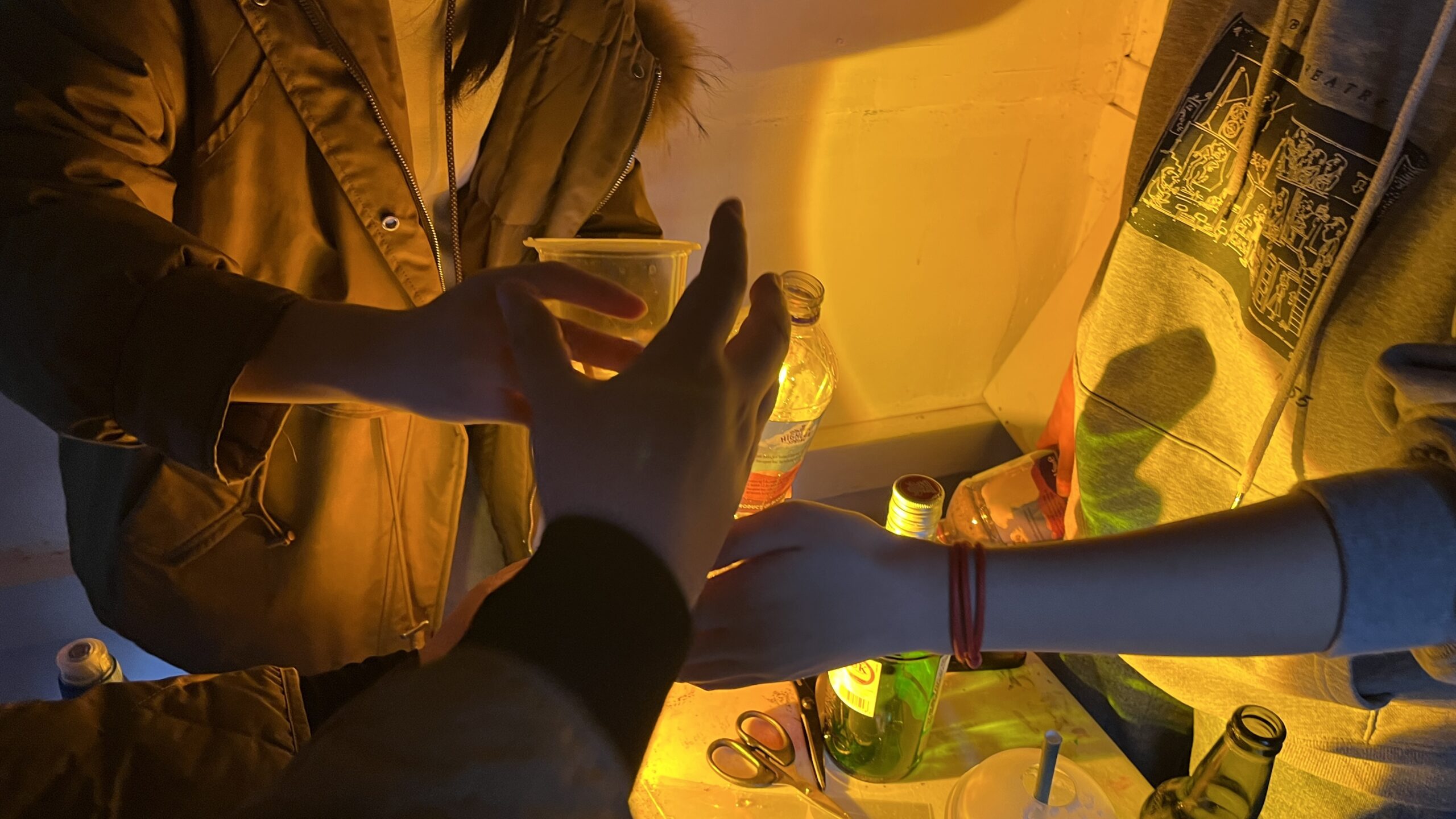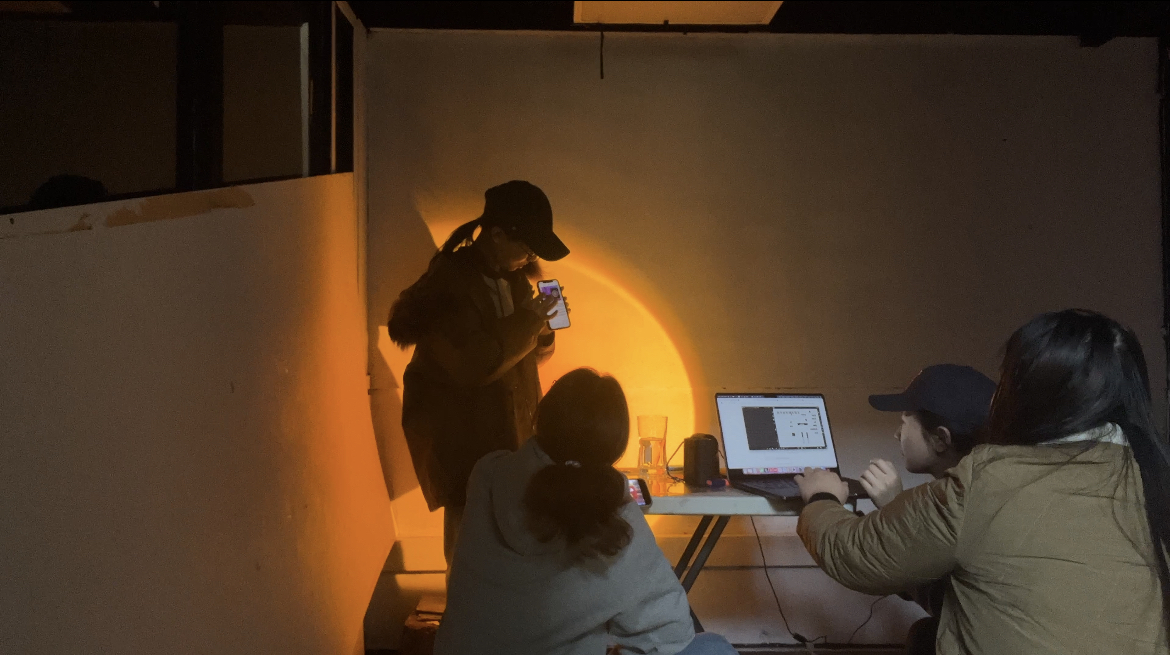We have been experimenting with materials through pre-material shopping. This Sunday we hired a room for our experiments and worked in groups to carry out the Water-holding Installation test, the colour reflection test, audio vibration test, and MAXMSP Music test. During this experiment, we encountered difficulties and problems that we had to solve, which made us struggle but we were able to reflect on them and move the project forward successfully. After analysing and reflecting on the results of the experiment, we optimised the design of the programme, the choice of materials, etc., and laid the foundations for the second experiment.
PART ONE: Water-holding Installation
What we want to achieve in this part is when the water is full of the water container, the water will flow away from the water container. We referred to a traditional Chinese container called “Fair Cup” (公道杯), which applies the Siphon Phenomenon.

There is a straw in a cup. The upper head of the straw is inside the cup, while the lower point is outside the cup. When the liquid level is higher than the upper head, the liquid will flow away from the straw.
We made a simple model for the container to test the function effect.


One problem we met was that the connecting hole of straw and cup was difficult to fit perfect and the water would flow away from the gap between the straw and the cup.
We used scissor to poke a hole in the cup, so it was hard to control the size of the hole. In the next week, I will try to use melt gun and hot melt adhesive to solve this problem.
PART TWO: Colour Reflection Test
Purpose
To superimpose different color variations on the reflected water ripples.

Process
As the laser paper was on delivery, for this experiment we used colored PVC sheets to simulate the experiment. By coloring the transparent PVC sheet to simulate the laser paper, the light is reflected in different colors.
In this experiment, we used a highlighter and overlaid the transparent PVC sheet with red and blue colors, expecting the color of the light to change; we looked for the right visual effect by side-lighting the water ripples compared to bottom lighting.

Results
As the highlighter can only apply a thin layer of color on the transparent PVC sheet and the coloring is uneven. Therefore, the color change between the red and blue PVC sheets could be shown on the wall, but the effect was not obvious. And if we want the color to become more visible, we need to place the colored PVC sheet extremely close to the light. The problem of how to control the distance between the colored PVC sheet (or laser paper) and the light is therefore a problem to be solved.
By comparing the side lighting with the bottom lighting of water ripples, we found that the water ripples were more visible and visually better when the bottom lighting was applied to the water.
Problems
① How to make the color of the light reflection obvious on the wall;
② Comparison of the light reflection effect between the transparent PVC sheet and the laser paper;
③ How to control the distance between the transparent PVC sheet (or laser paper) and the light;
④ How to switch the color of the light reflection on the wall (switch the transparent PVC sheet or laser paper with color);
⑤ The position of the water ripple reflection on the wall.
Reflections and Improvements
Problem ①
In our next experiment, we wanted to increase the thickness of the color applied to the transparent PVC sheet to enhance the effect of the color of the light reflected on the wall. In this experiment, we used a highlighter to apply the color to the transparent PVC. However, the pigment of the highlighter did not adhere to the transparent PVC sheet, resulting in the only light coloring of the transparent PVC sheet. For the second trial, we will soak the transparent PVC sheet in a higher concentration of gouache paint to improve the purity of the color on the transparent PVC sheet.
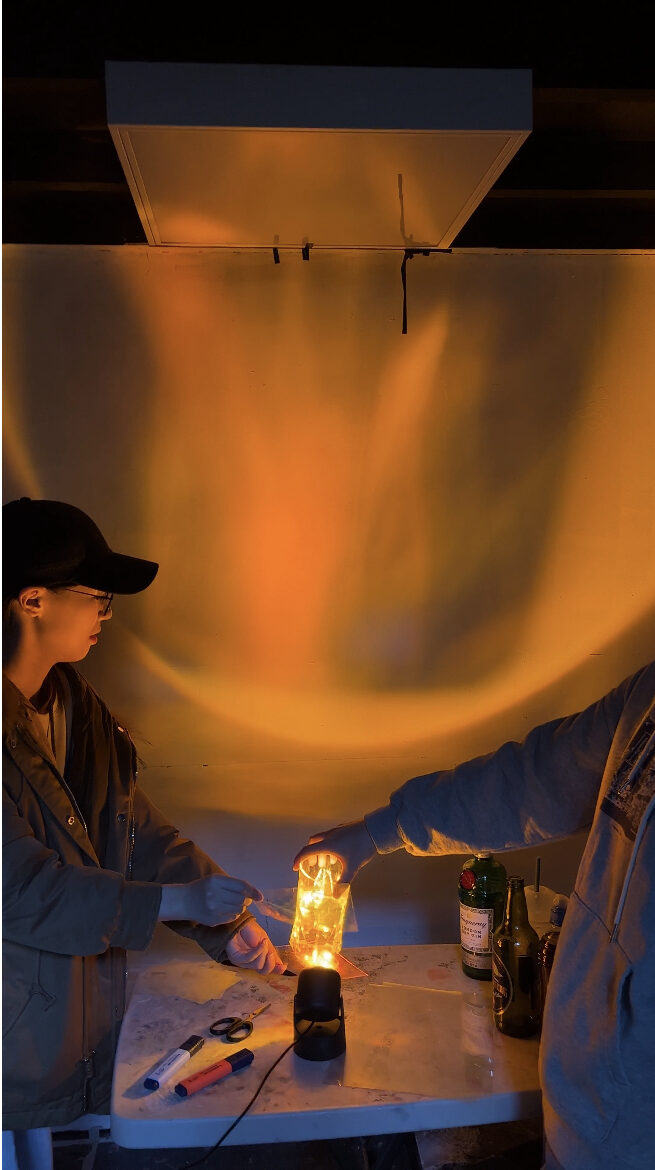
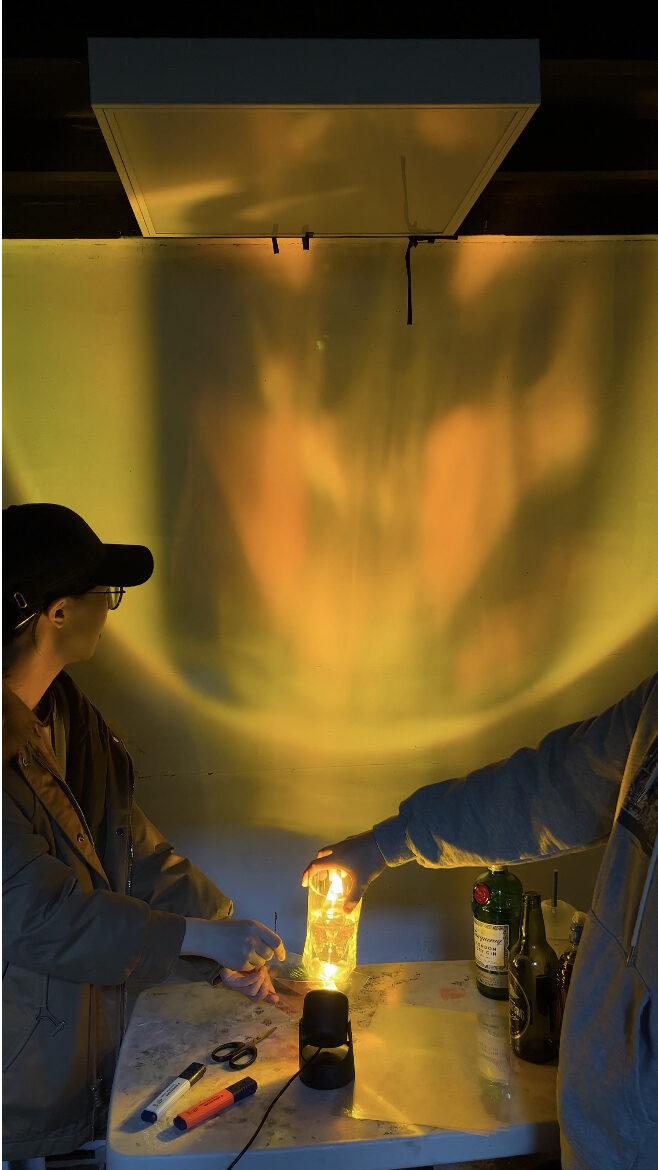
Problem ②
We plan to compare the light reflections of the transparent PVC sheet with those of the laser paper in our next experiment, given the richer color reflections of the laser paper. At the same time, we will also color some of the radium paper to become a third control group. We will choose the material that reflects light better by comparison.
Problem ③
We design to add a transparent PVC sheet to the light and then place the colored transparent PVC sheet (or radium paper) on top of the transparent PVC sheet so that the colored transparent PVC sheet (or radium paper) is as close to the light as possible.
Problem ④
We envisage pasting different colored PVC sheets and laser paper on the transparent PVC sheet in the form of a collage, allowing the light to project different colors on the wall as it passes through the PVC sheet. (This effect will be simulated in a second trial).
Problem ⑤
By comparing the side lighting to the bottom lighting of the water ripples, we found that the effect of the water ripples was more obvious and visually better when the water was bottom lit. We, therefore, chose to light the bottom of the water to give a ripple effect. As the bottom of the water is lit, the effect of the light on the vertical wall will change with the angle of the light and is not as stable as the ripples on the top wall, but this conclusion is influenced by the size of the room. So we will experiment with this effect again in a later test.



PART THREE: Audio Vibration Test
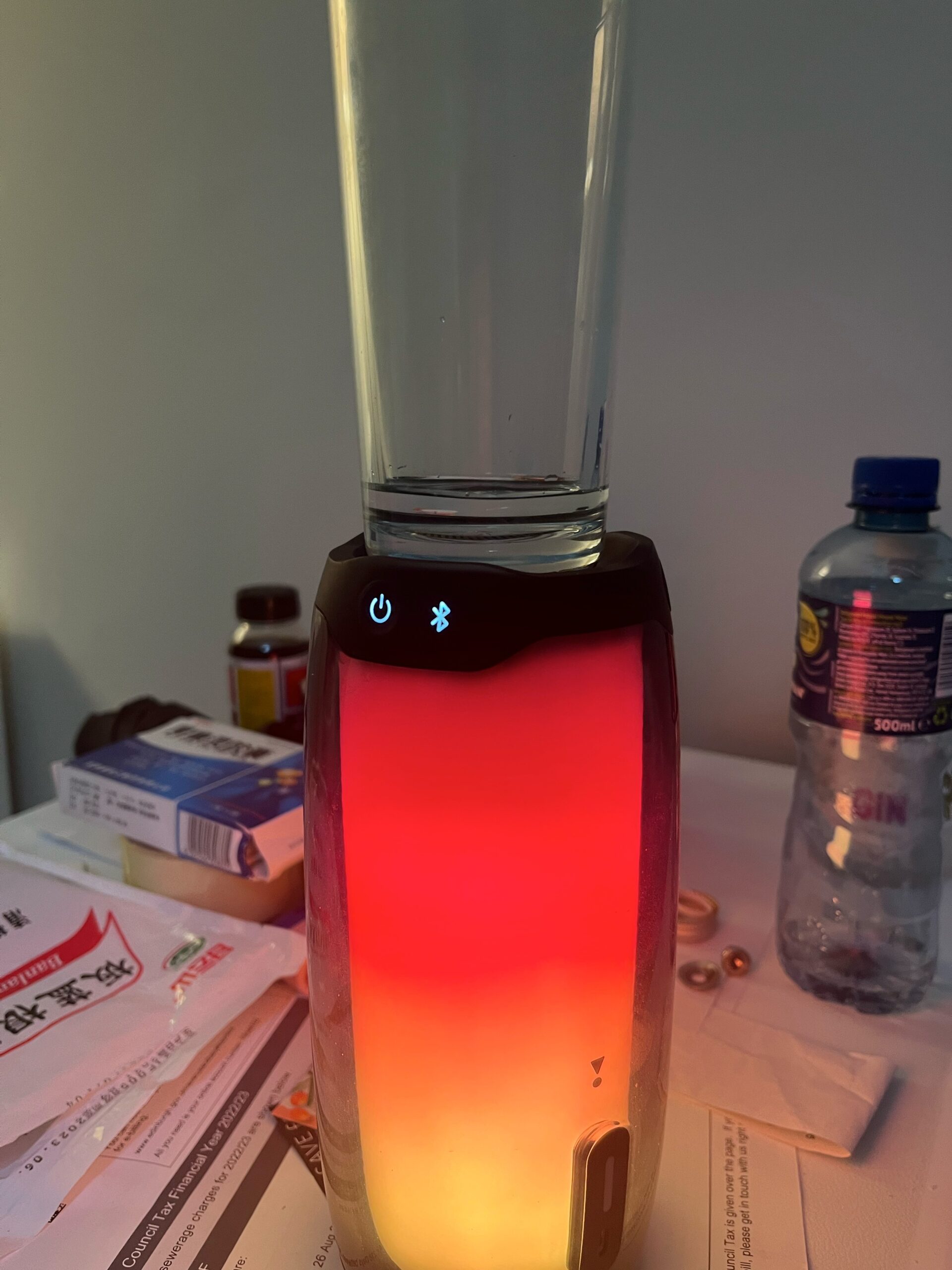
Test 1: Take Bluetooth speakers for testing. First, take the glass for the vibration test. The glass was placed on the stereo, and the water did not vibrate.
Reason for failure: glass too thick, stereo too small, poor vibration.


Test 2: Take a Bluetooth speaker for testing. The container of choice is a mineral water bottle. The water in the bottle appears to vibrate and change with the music.
Reason for success: the container is thin, and the vibrations of the stereo can be transmitted up.

Reflection:
It needs big speakers with great vibrations. If the container is too thick for the vibrations of the sound to be transmitted, try adding a spinning gear to the water. The speed of the gear can be varied in response to the music.
PART FOUR: MAXMSP Music Test

Reflection:
The music also needs to have some ambient and natural sounds added to it to make it more varied.
